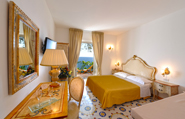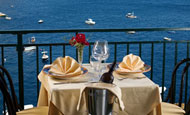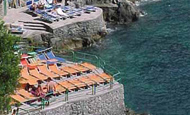NAPLES
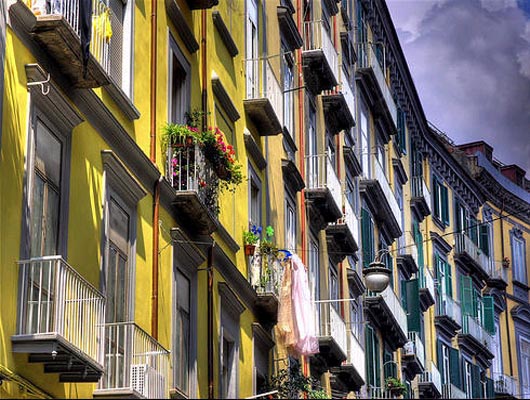
 Naples
has been a metropolis since ancient times. It has a fascinating history
throughout the ages and has handed down a rich cultural and artistic
heritage. Located in an environment that has been shaped by man on the bay
dominated Vesuvius, it is a showcase for some of the most famous
archaeological treasures in the world. Founded in the 7th and the 6th
centuries B.C. as a Greek colony, it flourished during the Roman Empire as a
port and a holiday centre for patrician families.
Naples
has been a metropolis since ancient times. It has a fascinating history
throughout the ages and has handed down a rich cultural and artistic
heritage. Located in an environment that has been shaped by man on the bay
dominated Vesuvius, it is a showcase for some of the most famous
archaeological treasures in the world. Founded in the 7th and the 6th
centuries B.C. as a Greek colony, it flourished during the Roman Empire as a
port and a holiday centre for patrician families.
The Greek-Roman street system is still virtually intact in the older
districts of the city. In later periods, mediaeval buildings and Baroque
palaces were constructed over the original base. In the early Middle Ages,
Naples was the headquarters of the Duchy of Naples, which was ruled from
Byzantium. In 1139, it became part of the kingdom of the Normans, then of
the Swabians. In 1266, Charles of Anjou took over and made it his capital.
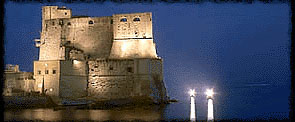 In 1441, under the Aragonese, who ruled from Castel
Nuovo (New Castle),the Renaissance began in Naples. In 1503, the Kingdom of
Naples fell into the hands of the Spaniards. The city began to extend its
typical dense network of narrow streets out towards the hill. It became a
capital again in 1734 under the Bourbons, a status it retained--apart from a
brief pause during Napoleon Bonaparte's reign (1806-1815)--until 1860, the
date of the Unification of Italy.
In 1441, under the Aragonese, who ruled from Castel
Nuovo (New Castle),the Renaissance began in Naples. In 1503, the Kingdom of
Naples fell into the hands of the Spaniards. The city began to extend its
typical dense network of narrow streets out towards the hill. It became a
capital again in 1734 under the Bourbons, a status it retained--apart from a
brief pause during Napoleon Bonaparte's reign (1806-1815)--until 1860, the
date of the Unification of Italy.
In
addition to the 13th and the 14th centuries, which generated a high level of
artistic activity, the Baroque period (17th and 18th centuries) was the most
prolific moment for Neapolitan art, architecture, painting and music, all of
which achieved new, dynamic forms of expression.
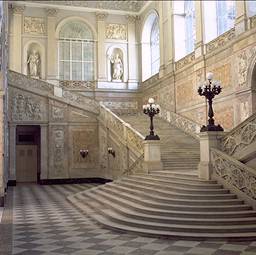 North of Vomero, at the highest point of the Campi Flegrei,
is the monastery of Camaldoli (1585) where there is a splendid view of the
city and the bay beyond. Further north are the catacombs ant the church of
San Gennaro, the patron saint of Naples. The promontory of Posillipo, which
separates the anchorage of Naples from that of Pozzuoli, also has a
magnificent panorama over the whole bay and the islands.
North of Vomero, at the highest point of the Campi Flegrei,
is the monastery of Camaldoli (1585) where there is a splendid view of the
city and the bay beyond. Further north are the catacombs ant the church of
San Gennaro, the patron saint of Naples. The promontory of Posillipo, which
separates the anchorage of Naples from that of Pozzuoli, also has a
magnificent panorama over the whole bay and the islands.
Here, set on the coast road, is the church of Santa Maria di Piedigrotta,
famous for its Neapolitan song festival held every September. At
Torre del Greco, there's a coral museum. At Portici, on the slopes of
Vesuvius, you can visit the Royal Palace built by Charles of Bourbon in
1738.
At Torre Annunziata, built on the ruins of the ancient town of Oplontis, a
fine Roman villa dating from the 1st century has been excavated. At Agnano
Terme, on the edge of an old volcanic crater, are the ruins of a Roman spa.
At the centre of the crater is the great Agnano race-course and, not far
off, the Wood of the Astroni.
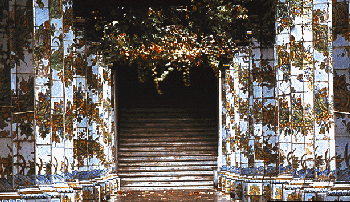 SANTA
CHIARA
SANTA
CHIARA
This church, one of the most important mediaeval monuments in Naples, was
built in 1310-28, probably by Gagliardo Primario, and was transformed in the
18th century by the addition of some lavish Baroque decoration by D.A.
Vaccaro and then Giovanni Del Gaizo. After the bombings in 1943, it was
rebuilt to restore its original 14th-century country garden by D.A. Vaccaro,
who covered the garden wall, the seats and the trellised columns in bricks
with painted majolica tiles depicting various brightly coloured scenes.
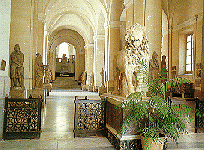 The
Archeological Museum
The
Archeological Museum
This is housed in a large pink building originally erected in 1585 as a
barracks for the cavalry. It was subsequently transformed to become the
headquarters of Naples University (1616-1777) and was then adapted to become
a museum upon the wishes of Charles of Bourbon, who transferred the Farnese
sculpture collection and finds from Pompeii and Herculaneum that he had
inherited to this site.
The museum, which is one of the most important in the world, with its fine
collections of sculpture, paintings, mosaics and various other objects,
provides a wonderful picture of various aspects of Ancient Greek and Roman
life.
Sculptures worthy of particular attention are a relief with Orpheus,
Eurydice and Hermes, a replica from the Augustan era of an original from the
Phidian school; the Doryphorus (lance- bearer), the best-existing Roman
replica of the Greek masterpiece in bronze by Policletus (450 B.C.); the
Farnese Bull, a colossal marble statue (the largest statue from ancient
times ever found, about 13 feet high), and a copy of the 2nd or 3rd century
work by Apollonius and Taurisco of Tralles reppresenting the Punishment of
Dirce.
The museum also houses the collection of mosaics from Pompeii, the most
valuable and complete collection of its kind. One particularly famous mosaic
depicts the Battle of Issus between King Darius of Persia and Alexander the
Great, which is unique on account of its historical and artistic value, as
well as its size.
The collection of paintings includes frescoes from the walls of villas at
Pompeii, Herculaneum and Stabiae dating from the 1st century B.C. to the 1st
century A.D.. They include the magnificently realistic portraits of
Pasquitus Proculus and his wife.
Of the jewels in the museum, the Farnese cup, of Alexandrian origin, is
particularly beautiful. Made of sardonyx, it is one of the largest cameos
ever found. There are also collections of small bronxes and vases.
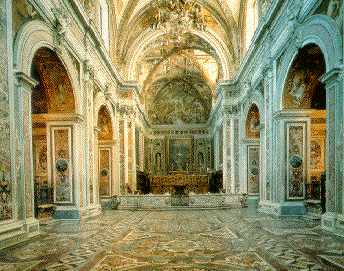 The
Certosa (or Charterhouse) stands on top of a spur jutting out from the
Vomero hill, with magnificent panoramic views. It dates from the 14th
century, but not much remains of the original building, since it was almost
completely rebuilt between the end of the 16th century and the mid-17th
century by the architects G.A. Dosio and C. Fanzago who, together with the
numerous masters in charge of the decoration, created the most complete
expression of 17th-century Baroque architecture.
The
Certosa (or Charterhouse) stands on top of a spur jutting out from the
Vomero hill, with magnificent panoramic views. It dates from the 14th
century, but not much remains of the original building, since it was almost
completely rebuilt between the end of the 16th century and the mid-17th
century by the architects G.A. Dosio and C. Fanzago who, together with the
numerous masters in charge of the decoration, created the most complete
expression of 17th-century Baroque architecture.
Today, it's the headquarters of the National San Martino Museum, which is
subdivided into three large sections: historical, artistic and monumental
The church of the charterhouse is full of inlaid marble and paintings and
constitutes a gallery of Naeapolitan 17th-century painting in its own right.
The most important works include the Deposition by M. Stanzione (1638), the
Twelve Prophets by Ribera (1643), the 17th-century wooden choir, the Washing
of the Feet, a masterpiece by B. Caracciolo (1622), and The Triumph of
Judith, a fresco by Luca Giordano (1704).
One of the museum rooms next to the church gives access to the famous
terrace with an all-encompassing, magical view of the city and the Bay of
Naples.






